East SIG Report May 2022
6th July 2022
Neil Muller
After 15 years as convener of East SIG, Paul Woolard has decided to retire from the role. On behalf of all members present, new host Frank Maher, thanked Paul for his many years’ service to the Melbourne PC East SIG. Frank then opened the May meeting, again from home via Zoom.
The first presentation of the night was by George Skarbek presenting his usual Q&A segment.
Q. Can you buy a new computer with Windows 10 installed, as I can’t see any advantage of Windows 11?
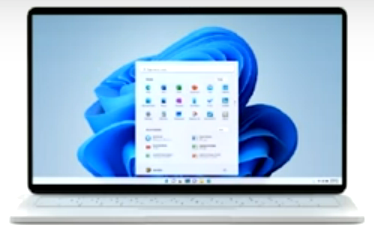
Figure 1 – Windows 11
A. Until quite recently you still had the choice of Operating Systems when purchasing a new computer. If you upgrade Windows 10 to 11, you can only roll it back to Windows 10 within the first 2 weeks. If you’re not sure what to do, stick with Windows 10. Later if you decide you want Windows 11, you can get a free update.
I’d suggest you only upgrade to Windows 11 if it offers something you really need. My personal preference is that I’ll be sticking with Windows 10 for the foreseeable future.
Q. Has anyone else noticed that the Windows communication drivers of late are a little bit flaky? I’m occasionally getting dropouts with WiFi, internet and ethernet.
A. I personally haven’t noticed any dropouts with my Window 10 PCs.
[David King responds] I’m running both Windows 10 and 11 and haven’t noticed any problems.
Q. I run Firefox as my browser with an add-on previously shown at East SIG called Simple Tab Groups (Refer PCUpdate meeting report March 2021). Using Simple Tab Groups, I find I have over 100 tabs running due to the numerous Tab groups I’ve created. My computer seems to be running slowly so could the add-on be the cause? Do you know of any feature that would sleep dormant tabs?
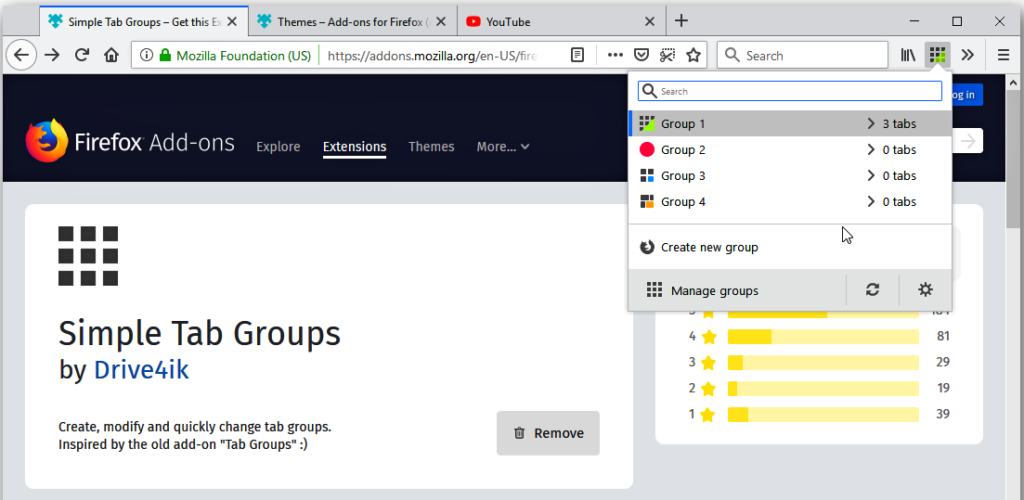
Figure 2 – Firefox Add-on, Simple Tab Groups
A. I don’t run that many tab groups, so I can’t really comment on Simple Tab Groups.
[Neil Muller responds] I use Simple Tab Groups as a defacto bookmark manager. I currently run 26 different tab groups, with probably over 300 tabs between them. My understanding is when Firefox and Simple Tab Groups load, all tabs are dormant except the current webpage. Only those tabs you visit during a session are open, all others remain dormant. While the computer is on, the remaining tabs (webpages) act as a shortcut to the webpage. I close my computer each night, when I start Firefox the next day, it starts off with only the displayed webpage open.
[Reply] When looking at the memory usage of Firefox in Task Manager, it is small at around 20 to 30k, so maybe there’s another reason for the computer to be running slow.
[George] I’d put the temporary Firefox files into a RAM drive and they’ll then open blindingly fast when you need them. If your computer is slow, one of the first things I’d do is to use Task Manager to see what is loading when your computer starts and disable anything you don’t really need. This does not uninstall the program, it simply stopping it from loading into RAM, where it sits taking up valuable resources until you need that program. Often a slow computer could be due to the hard disk running an anti-virus scan or Windows doing an update in the background.
Following Q&A, Trevor Hudson presented a new video he’d prepared, detailing how to “Cast Kayo Sports to a Smart TV”. Kayo Sports (https://kayosports.com.au) is a video streaming subscription service available in Australia, owned by Streamotion. The service offers sports live and on demand from Fox Sports, ESPN, beIN Sports, and Racing.com. (reference WikiPedia). The technique Trevor outlines in his video, follows a similar technique he used in last month’s video tutorial shown in Figure 3, “Cast Laptop Screen to Smart TV” at https://tinyurl.com/v84c43b6.

Figure 3 – YouTube Video, Cast Laptop to Smart TV
Trevor’s new video commences by outlining how to sign up to Kayo Sports and the cost of the various Kayo Sports packages available. He then outlines how to search and select a sports video and finally play the video found on the Kayo website.
Trevor provided the following tips for anyone planning to cast Kayo Sports to a smart TV.
- Do not use a VPN on your computer,
- Do not connect your TV through a PVR
- The TV and computer must be on the same WiFi channel.
To play the selected Kayo Sports video from your Windows computer on a smart TV, first select the Notification symbol on the Windows 10 Taskbar. Enlarge the Notification, by selecting “Expand” and then select the “Connect” icon. Once the wireless connection is made, a list will appear. Here you allow the use of the mouse by ticking a box and then use the mouse to select “choose projection mode”. Using the mouse will enable you to pause and stop the video.

Figure 4 – YouTube Video, “Cast Kayo Sports to Smart TV”
To see the complete details of how to cast Kayo Sports to a smart TV, Trevor’s video is available on YouTube by searching the title “Cast Kayo Sports to Smart TV”, or use the link https://tinyurl.com/5c97u9a9 .
Following Trevor’s presentation was Dave Botherway, demonstrating how he linked his Android smart phone to his Windows PC. After a brief introduction, Dave gave a live demonstration of the “phone Link” app. The graphics below are abridged screen captures taken from Dave’s presentation.
In Windows 10 and 11, an application called “Phone Link” enables users of Android Smart phones to access their phone from Windows, without actually touching the phone. To use this feature, a companion app called “Link to Windows” first needs to be downloaded to the phone. When the app is first launched on an Android phone, you’ll be asked to sign into your Microsoft account. From then on, the app works seamlessly without the need to log in again. The “Link to Windows” app is a free download from the Google Play store for Android phones.
The “Phone Link” app wirelessly connects to and mirrors your Android phone on a Windows computer. The app lets you read and send messages, view photos taken on your phone, view and run Android apps (only on recent Samsung phones), view notifications and monitor phone calls. Dave found when working on his computer, it was more convenient using the “Phone Link” app to access messages, notifications and calls, than to reach for his phone.
The “Phone Link” app is shown in Figure 5, and comprises an information area on the left and a tabbed interface to its right. Across the top are 4 tabs labelled, Messages, Photos, Apps and Calls. Selecting one of the tabs opens the relevant data from the phone. On the left of the app window, is the Notification panel, where notifications from the phone are displayed.
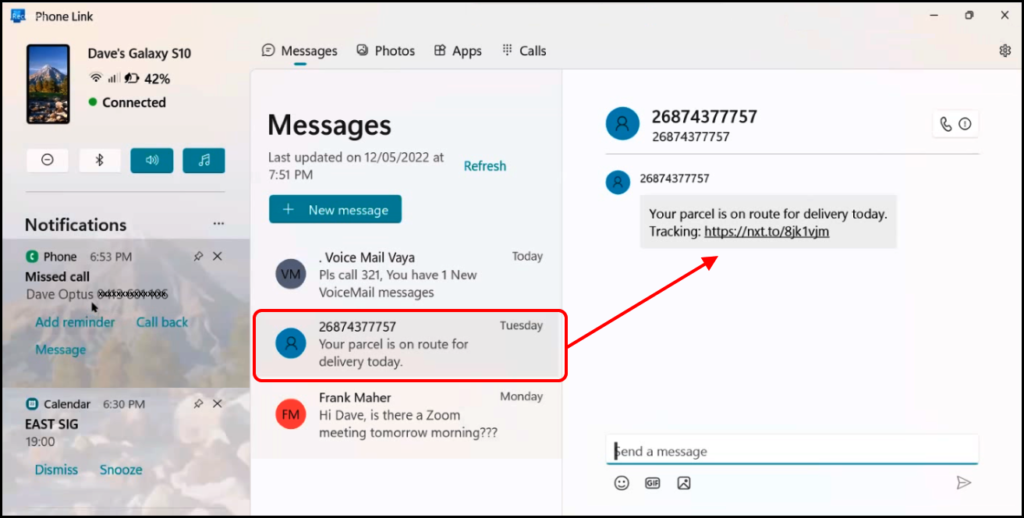
Figure 5 – Window “Phone Link” Messages window.
The “Phone Link” window shown in Figure 5 above, is open with the “Messages” tab displayed. Here SMS messages received on the phone are displayed in the centre of the window. When a SMS message is selected, such as the one shown with the red boarder, the complete message is displayed to the right. To reply to this message, you just start typing on the blue line on the bottom right of the “Phone Link” window. To send a new SMS message you select the icon below the “Messages” heading labelled “+ New message”.
When working on his computer, Dave has found replying to, or sending a message using his computer keyboard, is more convenient and quicker than on his phones tiny touch screen.
The panel on the left of the “Phone Link” window is always visible, no matter which of the 4 tabs is selected. In this panel, the phones name, model and battery power level are displayed. Below that are 4 icons that displays current settings on the phone. These are from left to right, “Do not disturb”, “Bluetooth”, “Volume on” & “Audio player on”. Below the 4 icons is the “Notifications” area. This is where notifications received on the phone are displayed. In figure 5 you can see Dave has missed a phone call and has been sent a notification from his calendar about the upcoming East SIG meeting.
If the “Photos” tab is selected, thumbnail images of photos taken and stored on the phone are shown, the most recent at the top. (Refer Figure 6). Selecting a photo by right mouse clicking on it, gives you the option to Open the photo in Windows, Open with, Copy, Save as, Share or Delete the image from the phone. Alternatively, you can double click on an image to enlarge it to fit the preview panel. From there you can carry out the same operation as offered by right clicking on the image.
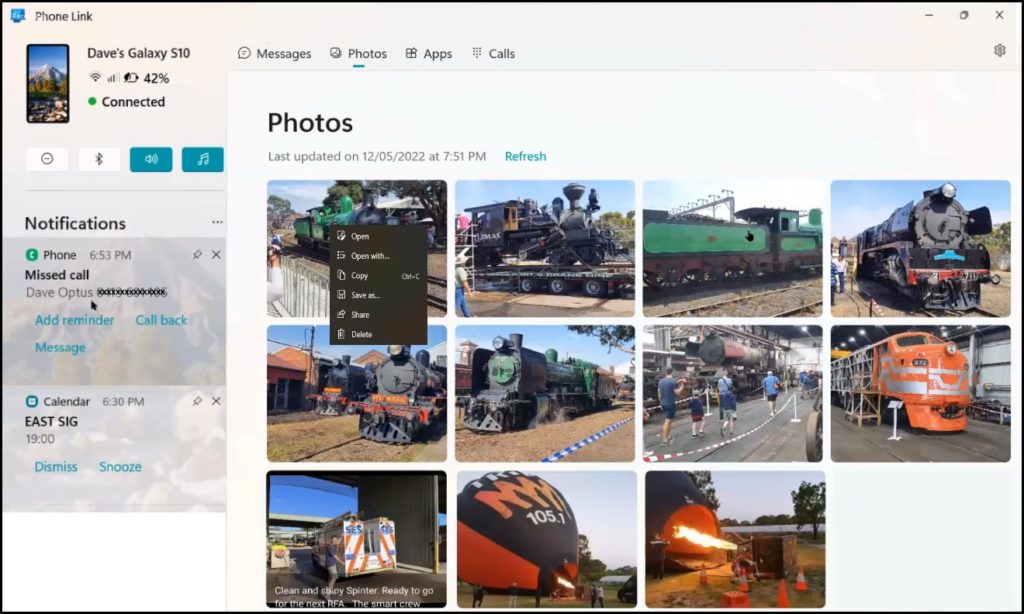
Figure 6 – Window “Phone Link” Photos window.
Under the “Apps” tab you can see all the apps that are on your Android phone. These are grouped under headings, “Recently used”, “Favourites” and “All apps”, as seen in Figure 7 below.
In some newer Samsung smart phones, clicking on the icon for an App, displays the phones screen within Windows, where apps can be run using your computers mouse. This was not a feature Dave demonstrated.
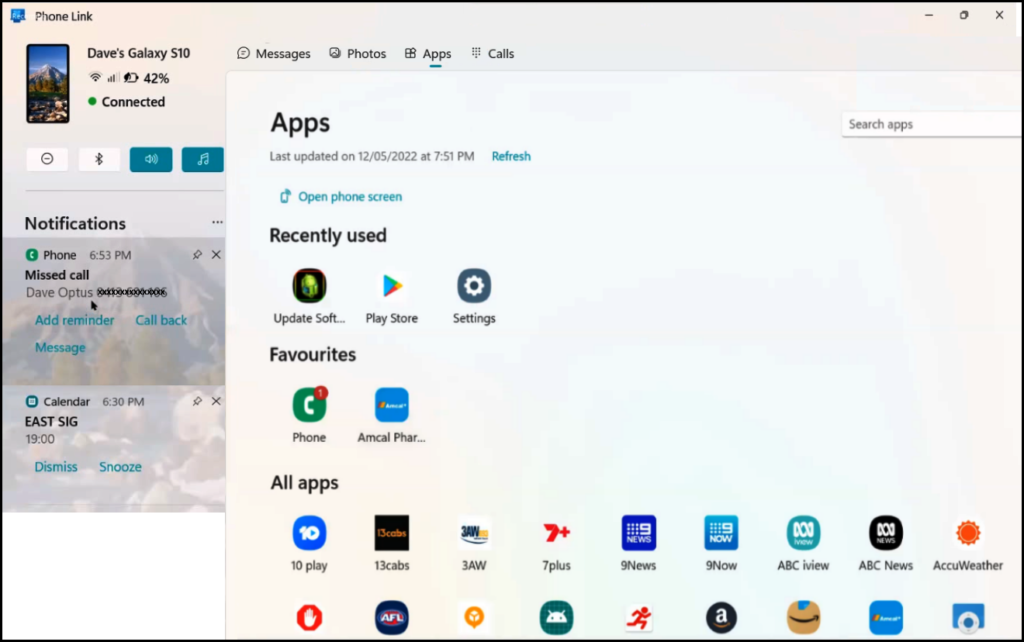
Figure 7 – Window “Phone Link” Apps window.
Finally, when selecting the “Calls” tab, the “Phone Link” window displays a list of all phone calls made and received, along with their date and the time calls were made. To the right of the list of phone calls, is a graphical keypad from which phone calls can be made and received without touching the phone. This requires a microphone and speaker attached to the computer, such as a headset.
To conclude his presentation, Dave selected the “Calls” tab and arranged for Frank to phone him. The Phone Link app displays the incoming call, which would normally be answered using the “Phone Link” app. Although this feature was tested and working before Dave’s presentation, Murphy’s Law applied, possibly caused by interference from using Zoom.
The final presentation of the night was by John Argall, who updated us on his solar journey titled “Running on Sunshine – an update“. John gave a very entertaining and informative presentation, commencing with the installation of solar panels, next how he updating the system with micro-inverters and battery, and finally the addition of an electric vehicle, a Renault Zoe to soak up the extra power being generated. To do John’s talk justice, I’ve included a number of screen captures and graphics taken from his presentation.
In June 2014 John installed a 3-kilowatt array of twelve 250 watt north facing solar panels. The electrical DC power generated from these panels was connected to a single inverter. The inverter then converted the DC power generated from the panels to AC for use in the house. Any excess power generated by the panels was exported to the power grid. This was the standard and most economic connection method at that time. With string inverter systems like this, shading on any one panel reduces the generation of the whole array, not just the panel in shade. This was not a problem for John except in winter months when the sun is low, causing some shading of his lower row of 6 panels. It is now 8 years since the system was installed and it has performed without any major issues in that time. In those 8 years, his system will soon have generated 28,000 kilowatt hours of power.
After observing that significant power was being exported to the grid, in December 2017, John decided to retrofit a battery storage and backup system to his existing solar array. John employed Bradford Solar to install 6 SolarEdge micro inverters (AP systems model YC500A) and an LG lithium battery system (LGchem 400V – 10) to store the excess power his system generated. John noted that only 9 kilowatts of the power stored in the 10-kilowatt battery is useable. Each micro inverter is connected to 2 solar panels, rather than a micro inverter per panel as is the norm, the latter deemed unnecessary in John’s situation.
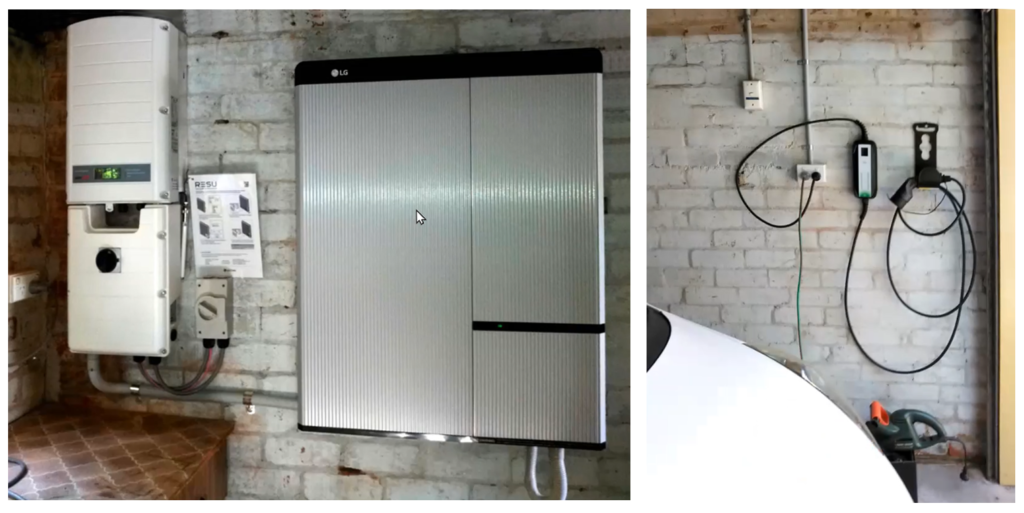
Figure 8 – Inverter & LG Battery installation Figure 9 – DC charging point
More recently and at random times John noticed that the battery system would turn itself off. This meant all the power being generated went straight to the grid and not the battery. He had contacted Bradford Solar a number of times about this. In February 2021, John noticed the complete system had turned itself off, with the word “Fault” displaying on its LCD screen. Under Australian consumer law, even when a product is out of warranty, it must be “fit for purpose”. John contacted Bradford Solar again and within a month after lodging a complaint, LG replaced the battery. The new battery system has worked without fault ever since.
| In the peak of summer, John found the battery system would often be fully charged by lunch time. Not wishing to send the excess power back to the grid, for little return, he purchased a small Renault Zoe electric vehicle in November 2021.
John described his experience and the differences driving the Zoe, compared to other conventional internal combustion engine cars he’d owned. The first vehicle a 1930 Austin 7, to the last a Honda Jazz. |
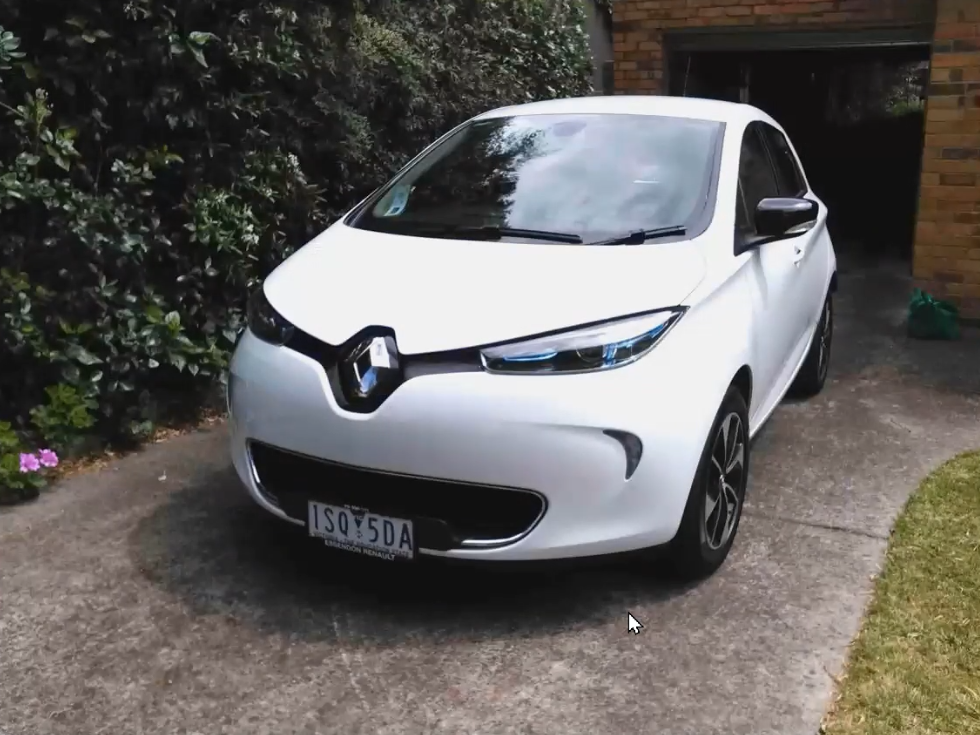 |
Figure 10 – John’s Renault Zoe Electric Vehicle
SolarEdge monitors John’s system remotely, giving him a wealth of graphical performance data which he can access by logging into the SolarEdge website. John displayed numerous charts, some of which I’ve included in this report. Most are self-explanatory.
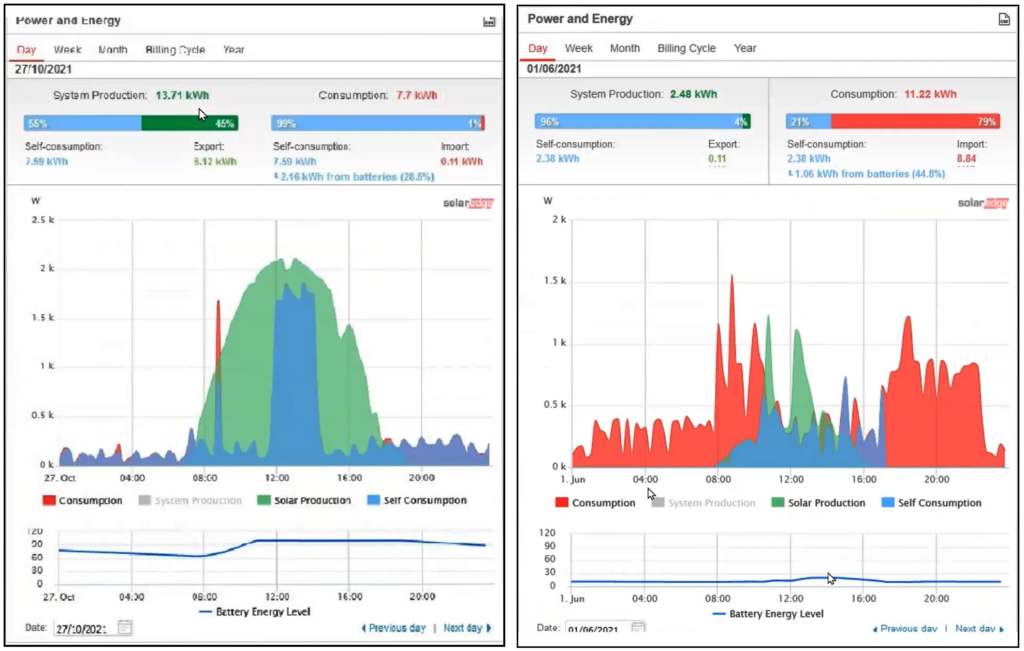
Figure 11 & 12 – SolarEdge Power & Energy charts
The Power & Energy charts in Figure 11 (from late October), Figure 12 (from early June) and Figure 13 (from mid-December) show the daily power generated in green, power used from the solar panels in blue and power used from the grid in red. The purple area seen in the charts is the drain from the battery. A second line graph below the main chart, displays the percentage power remaining in the battery versus time of day.
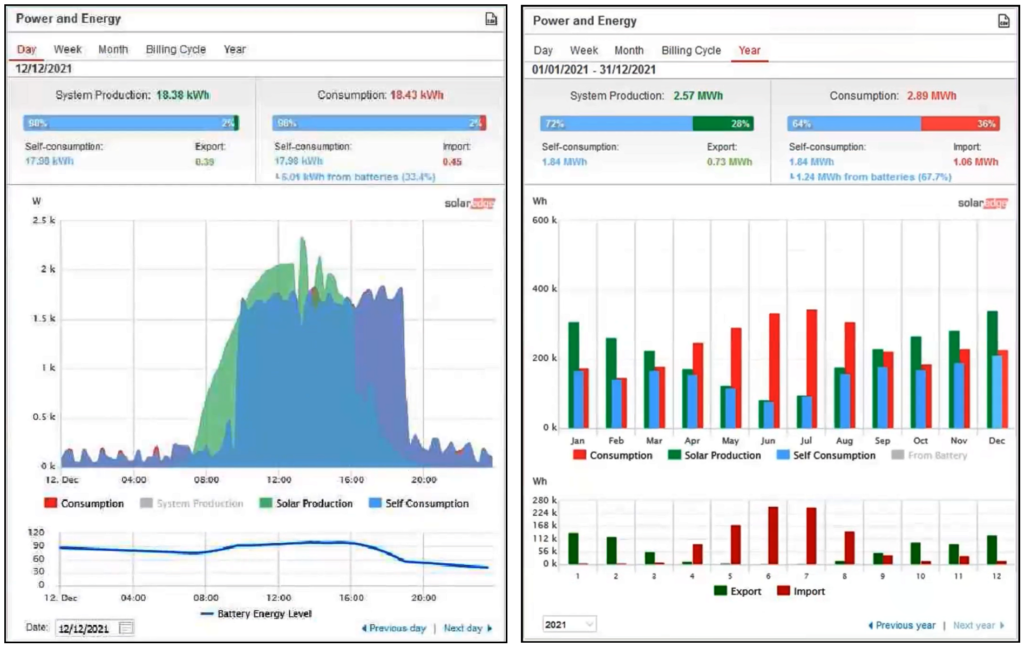
Figure 13 & 14 – SolarEdge Power & Energy charts
The bar graphs in Figure 14 displays the yearly view of John’s solar system for 2021. The 2 charts here reveal that during the warmer months, even with a 10-kilowatt battery, power is being exported to the power grid, while in the colder winter months power is being imported from the grid.
In addition to the graphical data available, digital data in the form of comma separated value files (.csv) can be downloaded from SolarEdge and John’s electricity distributor United Energy.
From this point on in his presentation John spoke mainly about his experience driving the Renault Zoe and range issues he needed to consider when planning trips.
The Zoe John purchased has a 42Kwh battery with an approximate range of 300km. This equates to an economy rating of 14Kwh per 100km travelled or 7km range per each Kwh of battery drain. John mostly charges his Zoe at home, partly due to the current poor state of public charging of EVs around Melbourne. He initially used the slower Level 2 charging at home through a DC outlet. John likens this to running a bar radiator. He referred to it as the equivalent of trickle charging at around 8.3 Amps. John often takes advantage of free charging at the Brickworks and Chadstone shopping centres, when out doing his weekly shop.
John was rather critical of the spacing and number of high-speed charging outlets offered by ChargeFox in Australia. Currently these outlets are located mainly along the east coast. Another complaint was drivers who leave their vehicle at charging stations and stay longer than needed. These drivers seem to use the charging station as a standard parking bay while they go off shopping, some for hours on end. These selfish drivers are monopolizing the space when others might wish to charge their vehicles. Often standard ICE vehicles will park in the free charging bays, to the annoyance of EV drivers who wish to charge their vehicles. John has not had this happen to him but knows of others who have.
Regeneration is very important when using EVs. John always resets the odometer to zero for each trip he takes so he can keep track of distance travelled and battery level usage. On freeways where there is greater drag on the vehicle and no regeneration for the battery, the range drops well below claimed figures. An EV driver who drove onto the Calder freeway and travelled for 76km, observed that the vehicles quoted range dropped by 99km. That driver said he “dropped” 1 km range for every 3km he drove on the Calder freeway.
| A month ago, John had installed a $2,200 Jet Charge Chargemate fast charge unit seen in Figure 15. This unit charges at 25 Amps compared to his original DC charging at 8.3 Amps. The Chargemate unit was provided by United Energy at no cost to John, except for the electrician’s installation cost. It was provided to John on the understanding that he enters into a one-year study. The Chargemate connects to John’s WiFi, where the results can be monitored remotely by United Energy.
The presentation concluded with numerous questions from the audience. |
Figure 15 – Jet Charge Chargemate home charging station |
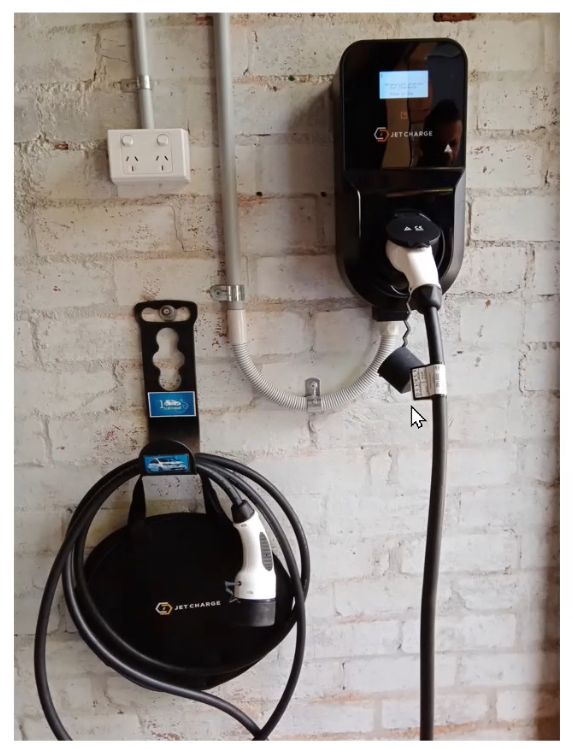



Recent Comments